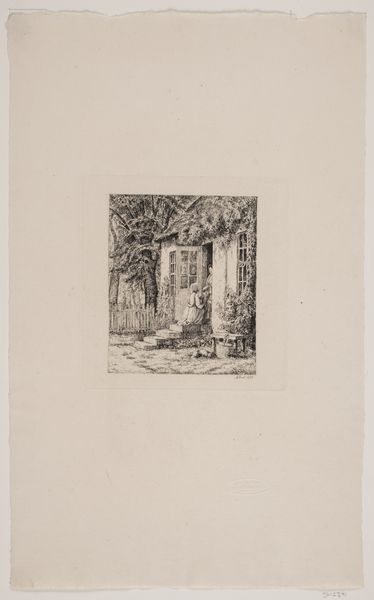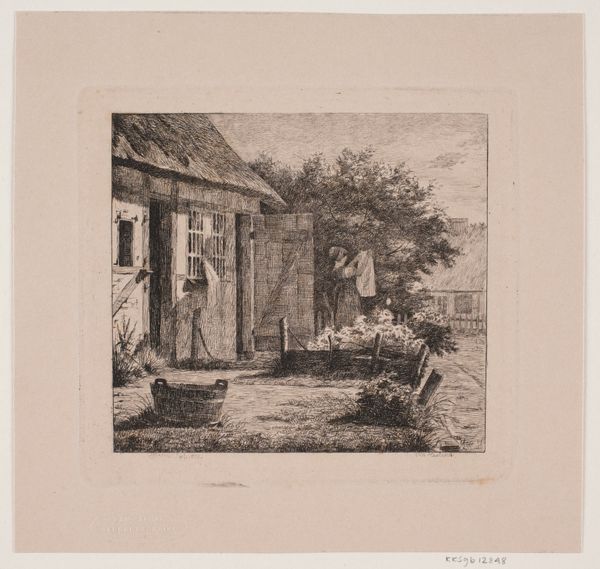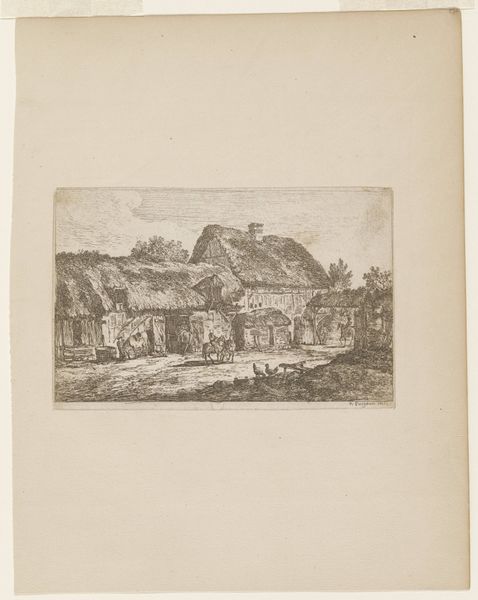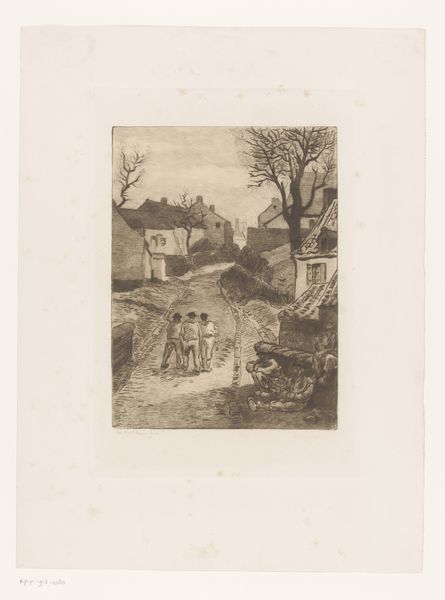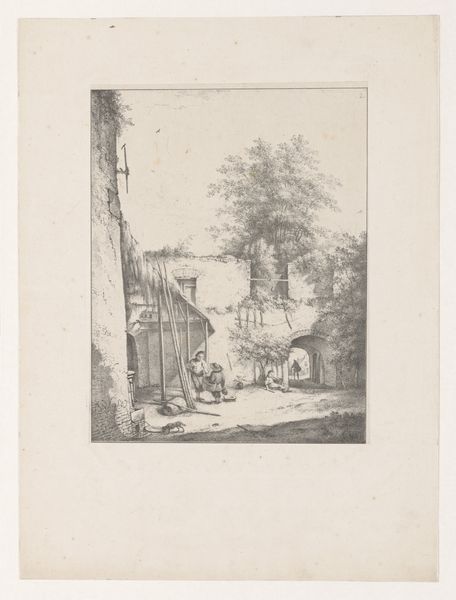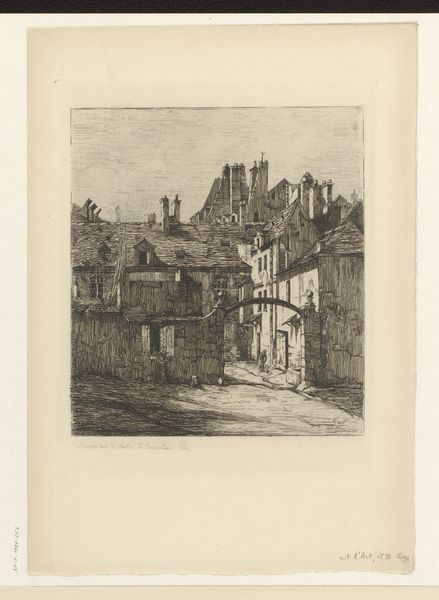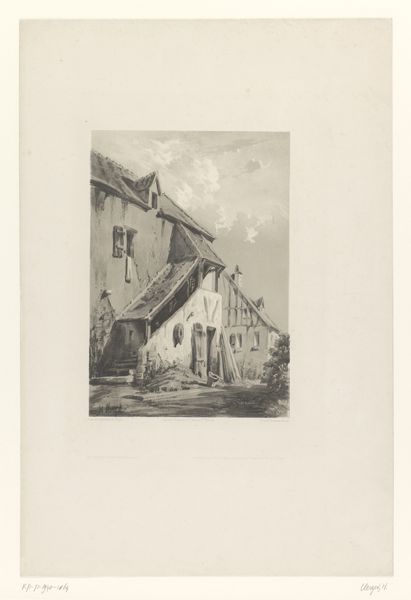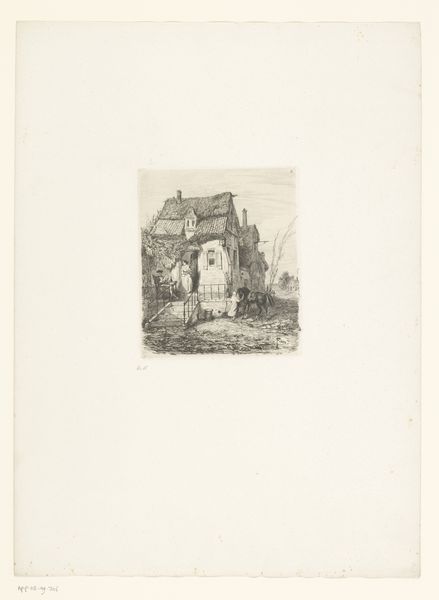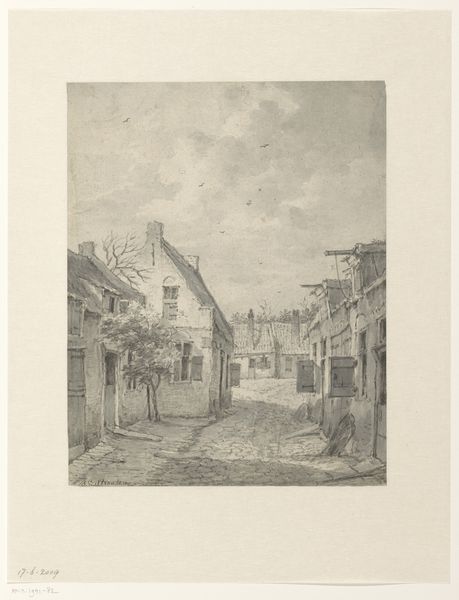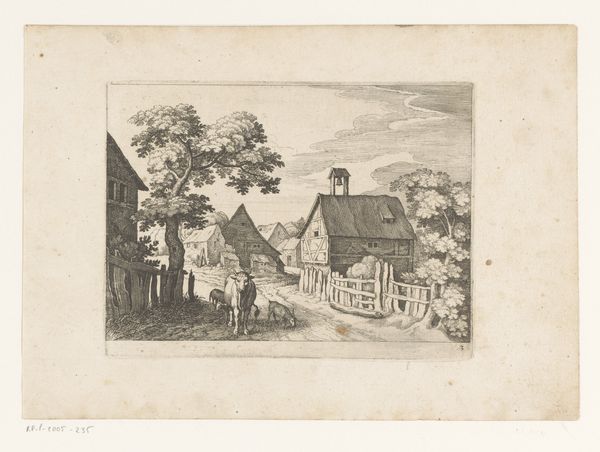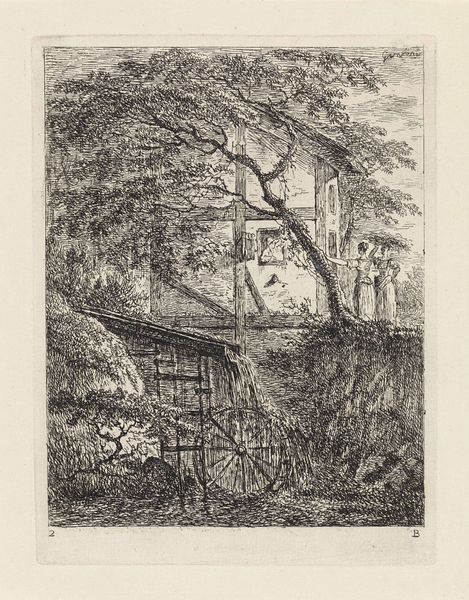
Dimensions: height 150 mm, width 89 mm
Copyright: Rijks Museum: Open Domain
Curator: Before us is Daniel Nikolaus Chodowiecki's print from 1778, titled "Prent uit Bürger's Gedichten," part of the Rijksmuseum collection. Editor: It feels incredibly intimate; almost as if we are intruding on a private moment captured in delicate lines. The density of hatching really brings this humble domestic scene to life. Curator: Yes, Chodowiecki was renowned for his engravings that depicted middle-class life with a touch of sentimental moralizing. Bürger, a prominent poet of the Sturm und Drang movement, was known for poems focused on emotional experience—particularly love and loss. These illustrations acted as a visual complement, shaping the reception of Bürger's poems and extending their accessibility to a wider audience. Editor: The texture is really striking. Look at the details of the thatched roof versus the smoothness of the tower in the background. I wonder about that choice of contrasting line weights, almost stark differences to indicate emotional weight. Curator: That formal contrast speaks volumes, doesn't it? The figures in the cottage, likely lovers, represent intimacy and human connection, framed against a more austere background, perhaps a gentle critique of the rigid social structures. These images helped to shape a visual culture of feeling, connecting bourgeois domesticity to larger conversations of personal liberty and sentimentality that defined late eighteenth-century intellectual life. Editor: Do you think there is perhaps a deeper symbolism with the birds? Are they representing the poetic subject taking flight through artistic work and life, or are the chickens in the yard drawing contrast, keeping those who are grounded, from being so? Curator: That's a wonderfully nuanced observation. The presence of the animals reinforces the narrative and grounded, domestic character, whilst those ascending, potentially signifying freedom or aspirations—themes common within Bürger's romantic works and also reflect a desire for something beyond everyday life. The Romantic movement definitely drew from the aesthetic for artistic representation in an attempt to have some kind of sociopolitical influence. Editor: Seeing Chodowiecki’s piece here certainly changes my perception of how the poems might be conceived by society back in this period. I had not looked at Romanticism through this intimate domestic space previously. Curator: Precisely, considering how artwork influences social narrative makes understanding shifts during period movements so interesting to interpret!
Comments
No comments
Be the first to comment and join the conversation on the ultimate creative platform.

